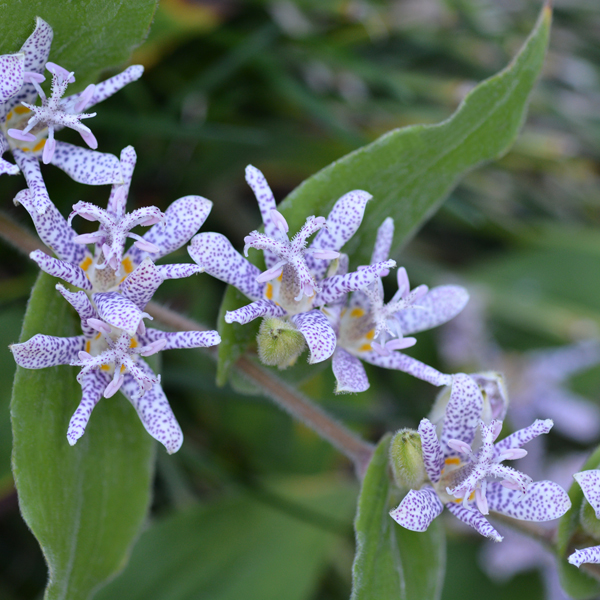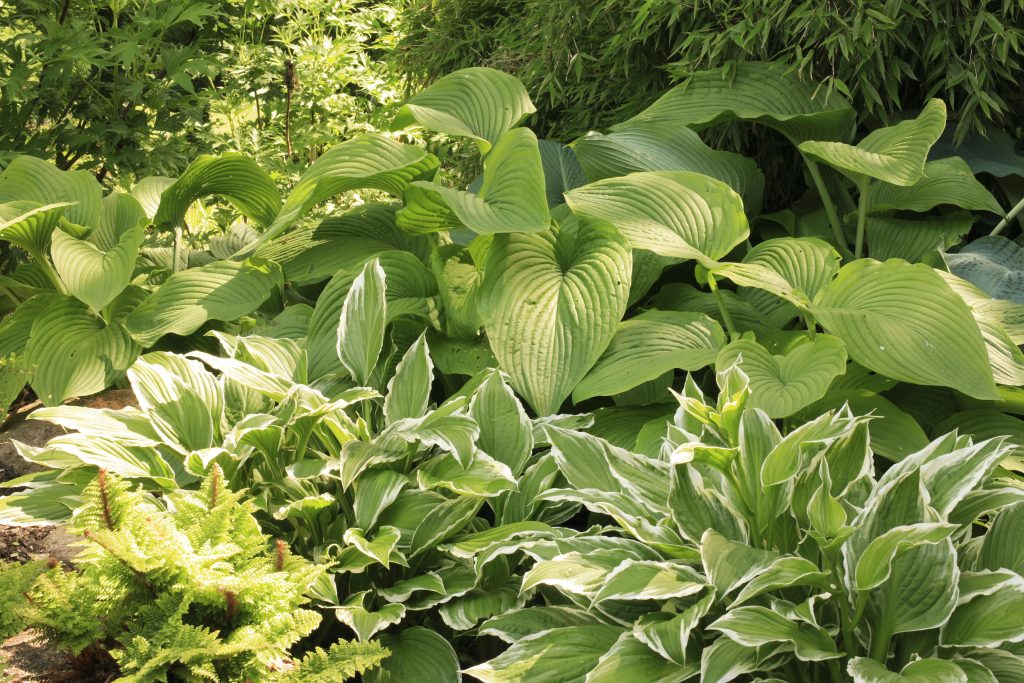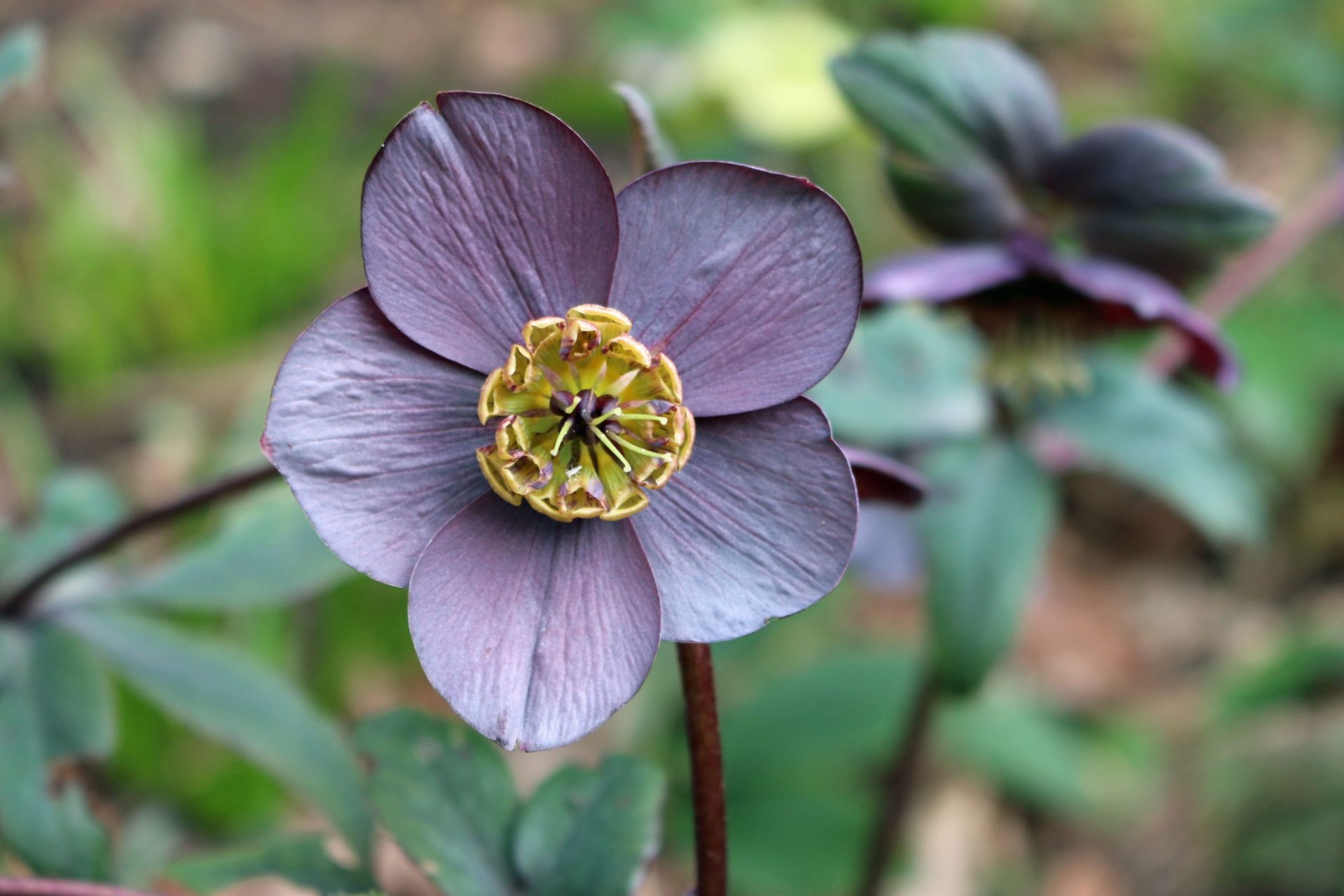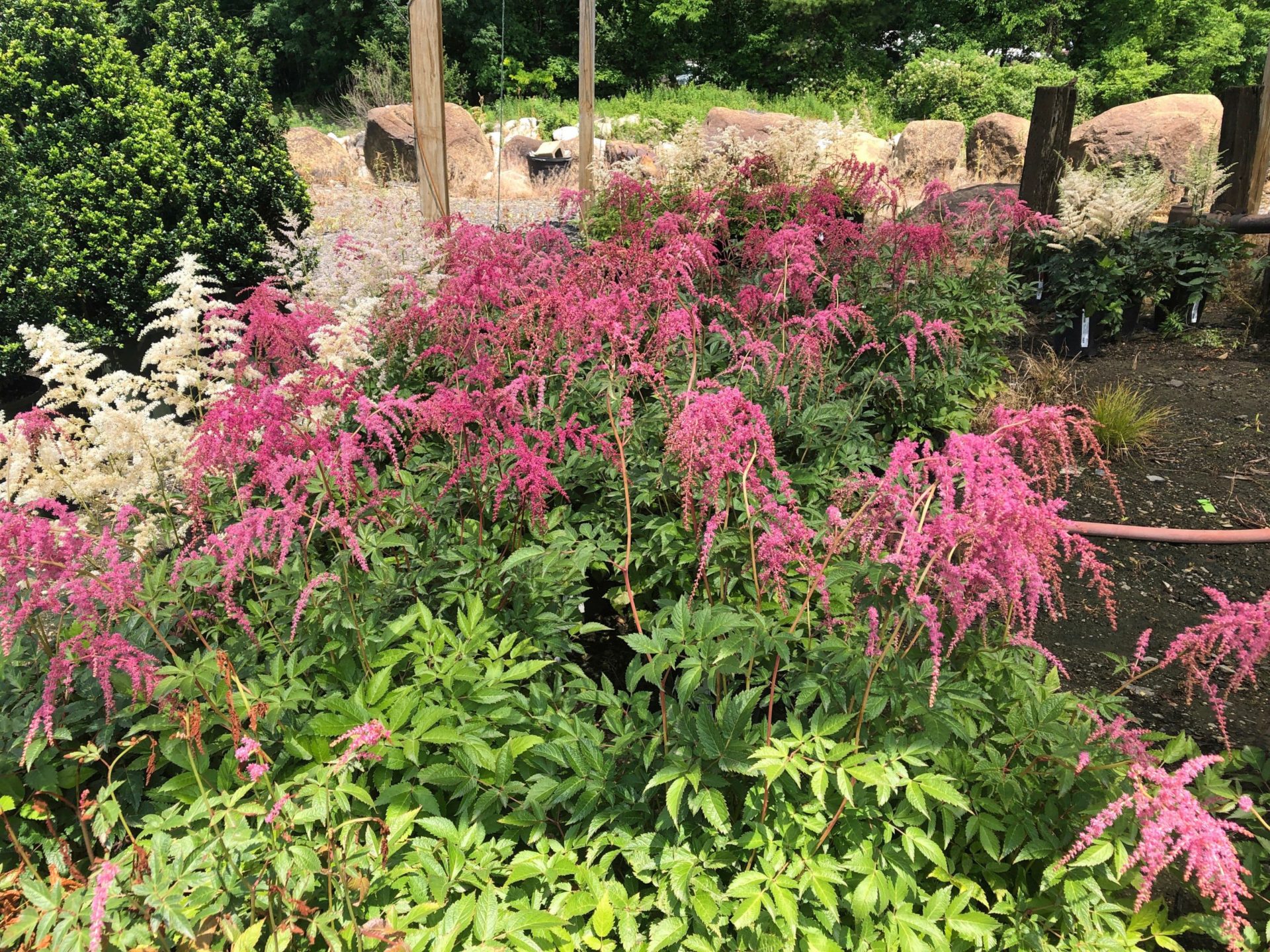
Brighten up not-so-sunny areas of your landscape with the foliage and flowers of these easy-to-grow plants.
Big Root Geranium (Geranium macrorrhizum)
One of the toughest shade-tolerant plants, Big Root Geranium doesn’t mind heat or drought . And deer and rabbits typically pass them by in search of tastier morsels. These colorful perennials put on a spring show with pink, purple, or white flowers; some varieties also offer outstanding fall color in their woodsy-scented foliage.
Light: Full shade to full sun
Water: Evenly moist, well-drained soil
Size: Up to 2 feet tall
Zones: 4-8
Toad Lily (Tricyrtis formosana)
Add a touch of elegance to your shade garden with graceful Toad Lily. This easy-to-grow flowering shade plant offers unique flowers that are often compared to orchids. Many are spotted with shades of purple or blue.
Light: Full to part shade
Water: Evenly moist, well-drained soil
Size: Up to 2 feet tall
Zones: 4-9
Ajuga (Ajuga reptans)
A top-notch shade perennial grown mainly for its attractive leaves, also produces blue flowers in the spring. Select varieties offer dark purple or variegated foliage, or pink or white flowers. It makes a tough groundcover, staying low and spreading outward with creeping stems.
Light: Full shade to full sun
Water: Evenly moist, well-drained soil
Size: Up to 6 inches tall
Zones: 3-9
Old Fashioned Bleeding Heart (Dicentra spectabilis)
There’s little wonder why old-fashioned Bleeding Heart is a favorite shade perennial. In late spring and early summer, it produces pink or white heart-shape shade flowers that hang from elegant, arching stems. It finely cut foliage looks almost fernlike. Test Garden Tip: By midsummer, bleeding heart usually goes dormant and loses its foliage. Plant it with Astilbe or Hosta so you don’t end up with a bare spot in your shade gardens.
Light: Full to part shade
Water: Evenly moist, well-drained soil
Size: Up to 3 feet tall
Zones: 3-9
Hosta
Among the showiest and easiest-to-grow shade perennials, Hostas come in a huge variety of sizes and shapes . Choose from miniatures that stay only a couple inches wide or giants that sprawl 6 feet across or more. Look for leaves in shades of green, blue, white, chartreuse, and gold, with many cultivars boasting pretty variegation. Some hosta flowers are very fragrant, too.

Light: Full shade, part sun, or full sun
Water: Evenly moist, well-drained soil
Size: Up to 2 feet tall (depending on variety)
Zones: 3-8
Lungwort (Pulmonaria officinalis)
Though it doesn’t exactly have a poetic-sounding name, Lungwort is an attractive shade plant. It earned its moniker from the silvery, lung-shape spots that dot the foliage of these flowering shade plants. The leaves look good all season long, but they make an especially pretty accent to the clusters of pink, white, or blue flowers in spring. Test Garden Tip: Because its foliage is somewhat hairy, deer and rabbits typically leave lungwort alone.
Light: Full shade, part sun, or full sun
Water: Evenly moist, well-drained soil
Size: Up to 12 inches tall
Zones: 4-8
Yellow Corydalis (Corydalis lutea)
This hardworking perennial takes the prize for being the longest bloomer in a shade garden. Enjoy the clusters of yellow flowers from late spring all the way to frost. It’s not just the flowers of yellow Corydalis that are beautiful; the gray-green leaves of these colorful shade plants are attractive as well. Deadhead the flowers if you don’t want this plant to self-seed around your garden.
Light: Full to part shade
Water: Evenly moist, well-drained soil
Size: Up to 12 inches tall
Zones: 5-8
Deadnettle (Lamium purpureum)
Starting in mid-spring, Deadnettle produces clusters of pink, purple, or white flowers. This shade perennial blooms all summer creating months of color. And even when it’s not blooming, the silver-infused foliage of these flowering shade plants brightens shady corners. Test Garden Tip: Keep deadnettle looking its best by keeping it moist. If it dries out too much, the leaves will develop brown edges.
Light: Full to part shade
Water: Evenly moist, well-drained soil
Size: Up to 8 inches tall
Zones: 4-8
Barrenwort (Epimedium grandiflorum)
An underused perennial that deserves more attention, Barrenwort has it all when it comes to shade perennials. The groundcover blooms in spring in shades of red, orange, yellow, pink, purple, or white; it tolerates dry shade and it’s deer- and rabbit-resistant. Some varieties are evergreen in mild-winter areas; others offer good fall color.
Light: Full to part shade
Water: Tolerates dry spells, but does best with regular watering
Size: Up to 12 inches tall
Zones: 5-9
Brunnera (Brunnera macrophylla)
In spring, the sky blue shade flowers of Brunnera add welcome sparkle to shade gardens. When not in bloom, its large, robustly textured leaves continue to look pretty, especially if you grow a variegated variety. While the plant is often short-lived, it does tend to self-seed so you won’t need to buy new plants.
Light: Full to part shade
Water: Evenly moist, well-drained soil
Size: Up to 2 feet tall
Zones: 3-8
Hellebore
Also called Christmas rose, Hellebore, is also one of the earliest bloomers of flowering shade plants. Look for its burgundy, pink, cream, green, or white shade flowers in late winter or early spring. Although it looks delicate, the Christmas rose is quite sturdy once it gets established, very drought-tolerant, and it’s deer- and rabbit-resistant.

Light: Full to part shade
Water: Tolerates dry spells, though it does best with regular moisture
Size: Up to 12 inches tall
Zones: 4-8
Astilbe
With feathery flowers appearing in early summer, Astilbe blooms in shades of burgundy, red, pink, lavender, and white. In addition to the attractive flower plumes, this shade plant has finely cut foliage, which in many varieties is flushed with bronze.

Light: Part shade
Water: Evenly moist, well-drained soil
Size: Up to 3 feet tall (depending on variety)
Zones: 4-8
Japanese Painted Fern (Athyrium niponicum)
It’s tough to imagine a lovelier shade perennial than Japanese Painted Fern. This beauty offers fronds liberally dappled with silver, burgundy, and green. Plus, it’s a low-growing, slow-spreading plant for shady areas. Deer and rabbits usually leave it alone.
Light: Full to part shade
Water: Evenly moist, well-drained soil
Size: Up to 12 inches tall
Zones: 5-8
Wild Ginger (Asarum spp.)
Hailing from the woodlands of North America, Wild Ginger is one of the toughest shade plants. It produces fuzzy, heart shaped leaves that look great from spring to fall. And it’s rarely bothered by deer and rabbits. This slow grower eventually forms an impressive groundcover.
Light: Full to part shade
Water: Evenly moist, well-drained soil
Size: Up to 6 inches tall
Zones: 2-8
Japanese Forestgrass (Hakonechloa macra)
With graceful foliage that looks like a waterfall, Japanese Forestgrass comes in varieties that have bright gold, yellow, or white variegation. In fall, the leaves of these colorful shade plants often pick up beautiful reddish tones.
Light: Full to part shade
Water: Evenly moist, well-drained soil
Size: Up to 12 inches tall
Zones: 5-9
Lilyturf (Liriope muscari)
Loved for its grassy foliage and spikes of blue or white flowers in late summer, Lilyturf also scores major props for being low on the menu for deer and rabbits. Plus it’s practically a plant-and-forget-it garden resident, even when growing in dry shade.
Test Garden Tip: Lilyturf can be a fast, almost aggressive spreader when it’s happy.
Light: Full shade, part sun, or full sun
Water: Tolerates drought well, but does best with regular watering
Size: Up to 12 inches tall
Zones: 5-10
Fern-Leaf Bleeding Heart (Dicentra eximia)
Unlike the old-fashioned bleeding heart, fern-leaf bleeding heart keeps its beautiful foliage all season long. These shade plants bloom on and off from spring to fall (if they get enough moisture during hot, dry periods), producing delicate clusters of pink, red, or white flowers.
Light: Full to part shade
Water: Evenly moist, well-drained soil
Size: Up to 2 feet tall
Zones: 4-8







